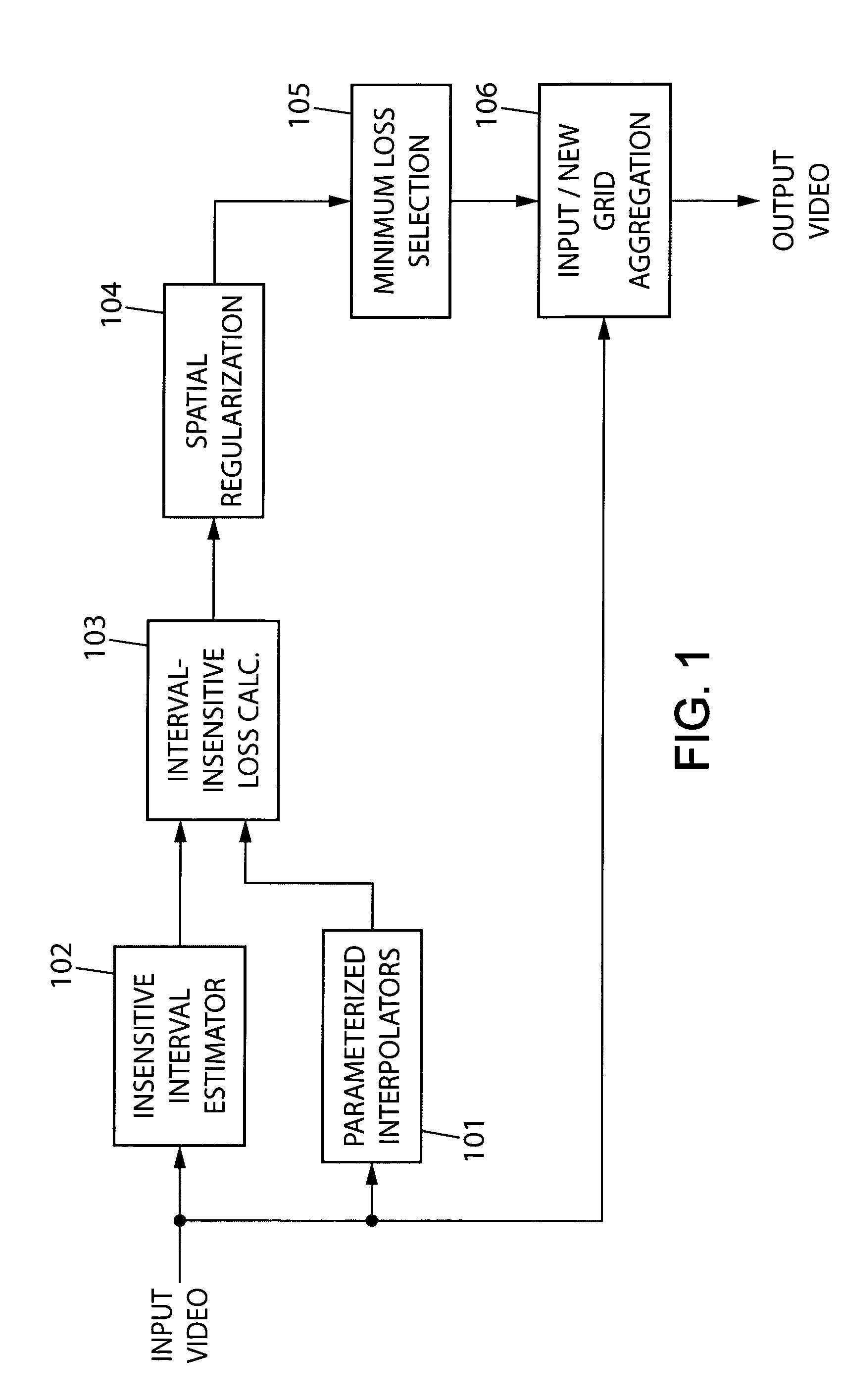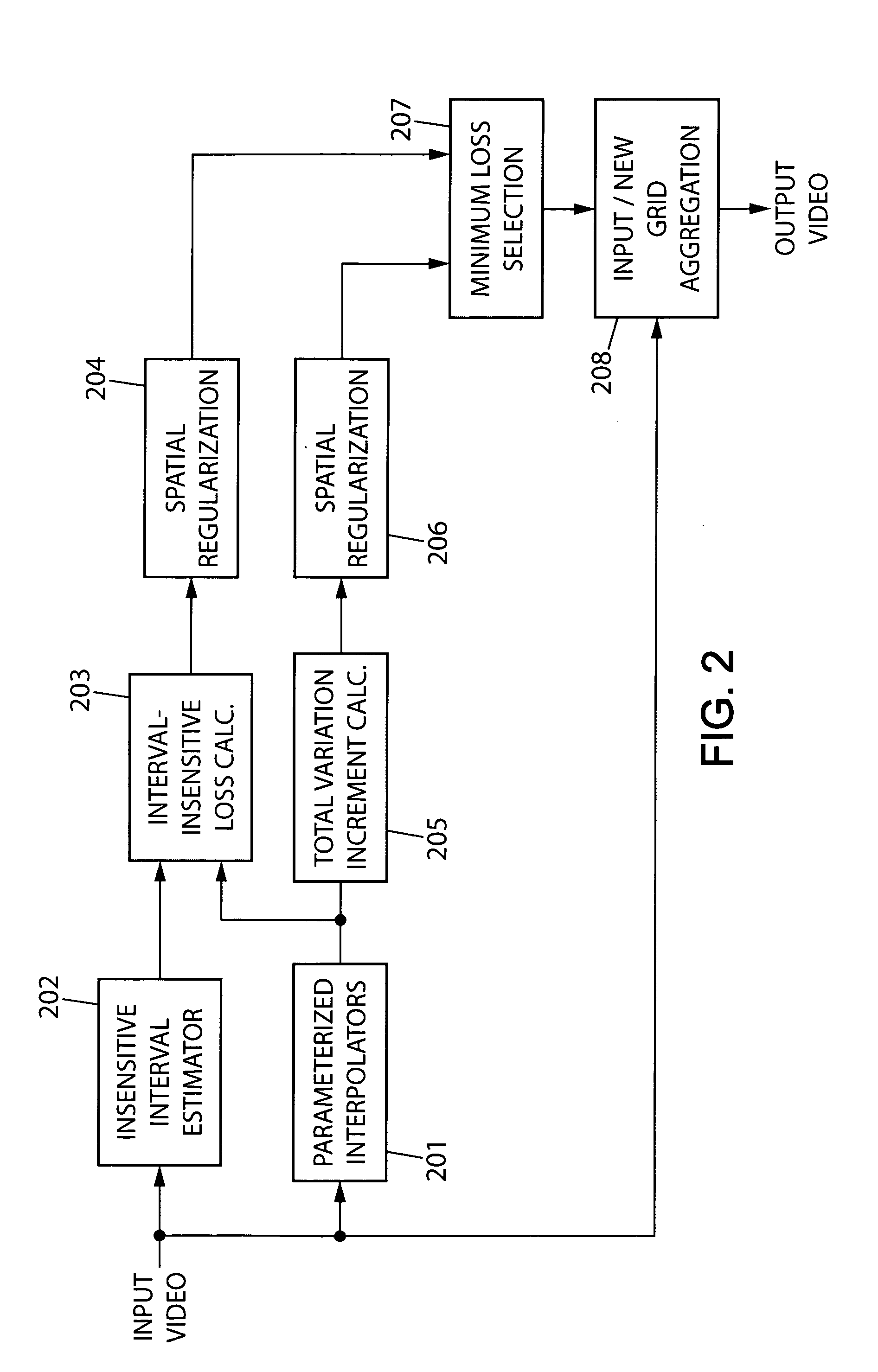Method and apparatus for robust super-resolution video scaling
a super-resolution, video scaling technology, applied in the field of video image processing, can solve the problems of high-visibility artifacts, unstable motion compensation techniques, and introduction of visible artifacts
- Summary
- Abstract
- Description
- Claims
- Application Information
AI Technical Summary
Benefits of technology
Problems solved by technology
Method used
Image
Examples
Embodiment Construction
[0032]FIG. 1 shows a first apparatus exemplifying the present invention. The apparatus processes a video signal of 2D images defined on a spatio-temporal input grid G. For each time index t, where t is an integer parameter, the spatio-temporal input-grid G is a grid of points whose coordinates in R3 are x(n1, n2, t)=n1τ1+αn2τ2+τ3+τ4(t) where τ1=(1, 0, 0) and τ2=(0, 1, 0) are normalized horizontal and vertical spatial vectors, τ3=(0, 0, 1) is a vector along time, and τ4(t) is a spatial shift that depends if the video is interlaced or progressive. If the input video is interlaced then it is composed of two fields at two time instant t and t+1, where for t even the first one includes the even rows and the second one the odd row. In this case the input grid are defined in R3 by α=2 and τ4(t)=(0, 0, 0) if t is even and τ4(t)=(0, 1, 0) if t is odd. If the input video is progressive then α=1 and τ4(t)=(0, 0, 0) for all t. To each input grid point x(n1, n2, t) the input video gives an image...
PUM
 Login to View More
Login to View More Abstract
Description
Claims
Application Information
 Login to View More
Login to View More - R&D
- Intellectual Property
- Life Sciences
- Materials
- Tech Scout
- Unparalleled Data Quality
- Higher Quality Content
- 60% Fewer Hallucinations
Browse by: Latest US Patents, China's latest patents, Technical Efficacy Thesaurus, Application Domain, Technology Topic, Popular Technical Reports.
© 2025 PatSnap. All rights reserved.Legal|Privacy policy|Modern Slavery Act Transparency Statement|Sitemap|About US| Contact US: help@patsnap.com



